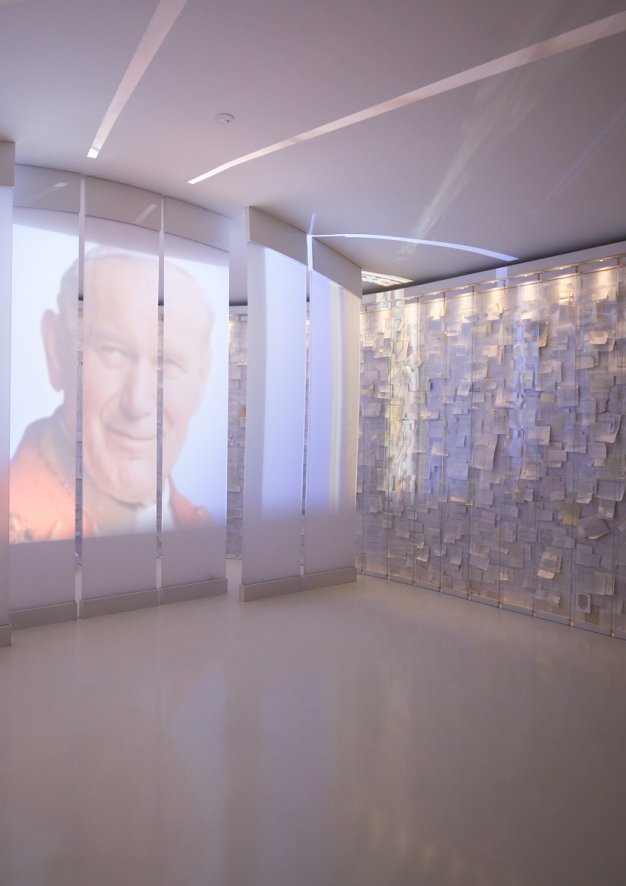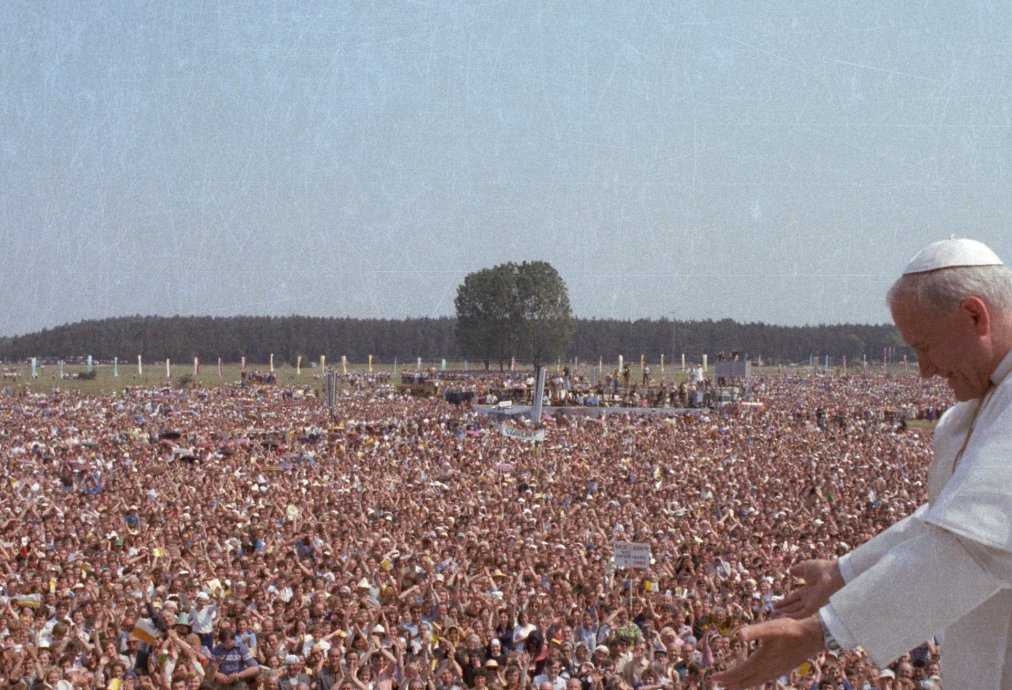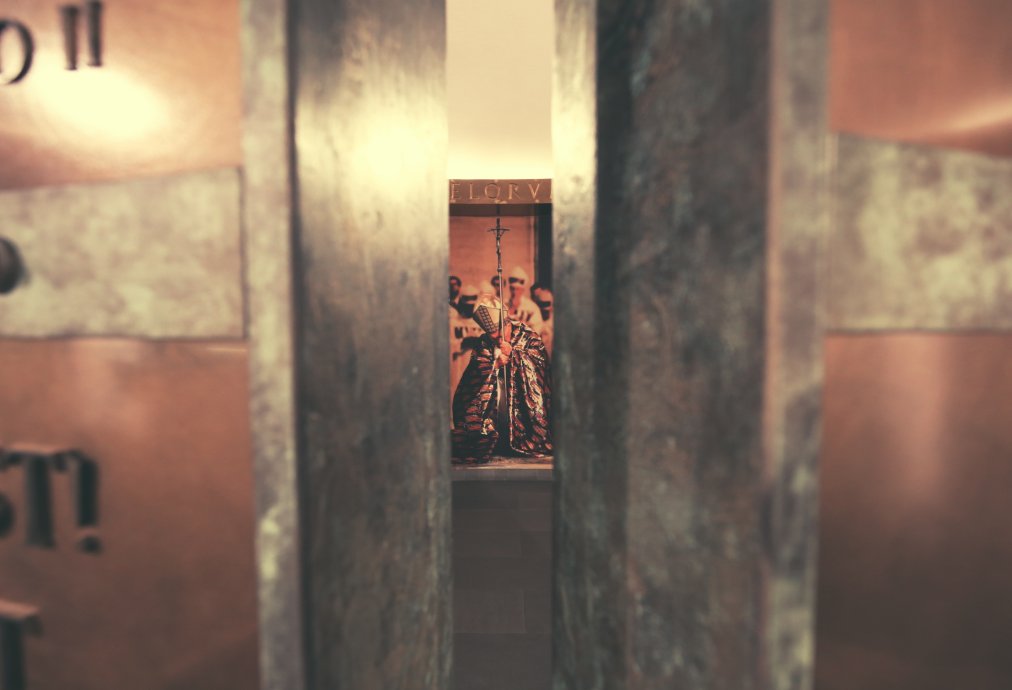
Rome 1978-2005
John Paul II became the leader of the Catholic Church on 16 October 1978 as the 264th Pope in the history. His 27-years’ pontificate was certainly one of the most important events of the last century. He was the first Pope who strived so hard to understand the contemporary world and solve the problems of civilization. He showed concern not only about religious matters but also political, economical, social and cultural.
Pope directed his message to people of different cultures, races and beliefs. He was an ally of peace based on mutual respect and tolerance. He had inter-religious dialogue with focus on Judaism and Islam. Through his unusual activities and universal teaching, John Paul II often appeared in newspapers, on the radio and television throughout the world. His texts were translated into dozens of languages and meetings with him attracted hundreds of thousands of the faithful. During his numerous pilgrimages he visited both big cities – places of worship and small communities. Always open to the world and other people he was spreading Christian values around the globe. Through his pontificate he tried to make the world a better place and also enrich us, the people, spiritually.
Karol Wojtyla was elected pope on October 16, 1978. Six days later was the inauguration of the pontificate. It was then that the memorable words were spoken: "Do not be afraid, open, open wide to Christ."
Three months after the inauguration of the pontificate, in January 1979, John Paul II went on his first foreign apostolic journey: to the Dominican Republic, Mexico and the Bahamas. This was the beginning of his pilgrimage, which was the hallmark of his shepherding.
Pope directed his message to people of different cultures, races and beliefs. He was an ally of peace based on mutual respect and tolerance. He had inter-religious dialogue with focus on Judaism and Islam. Through his unusual activities and universal teaching, John Paul II often appeared in newspapers, on the radio and television throughout the world. His texts were translated into dozens of languages and meetings with him attracted hundreds of thousands of the faithful. During his numerous pilgrimages he visited both big cities – places of worship and small communities. Always open to the world and other people he was spreading Christian values around the globe. Through his pontificate he tried to make the world a better place and also enrich us, the people, spiritually.
Karol Wojtyla was elected pope on October 16, 1978. Six days later was the inauguration of the pontificate. It was then that the memorable words were spoken: "Do not be afraid, open, open wide to Christ."
Three months after the inauguration of the pontificate, in January 1979, John Paul II went on his first foreign apostolic journey: to the Dominican Republic, Mexico and the Bahamas. This was the beginning of his pilgrimage, which was the hallmark of his shepherding.
Pilgrim Pope
The Holy Father John Paul II was undoubtedly the most pilgrimaged Pope in history. During his pontificate, he made 104 apostolic journeys, visiting 129 countries on all continents.
He spoke to millions of people and visited places where no pope had been before. He was able to speak in many languages, thanks to which he established even better contact with people of different nationalities. Meetings with him were a great event for the faithful, often changing them internally for the rest of their lives.
He spoke to millions of people and visited places where no pope had been before. He was able to speak in many languages, thanks to which he established even better contact with people of different nationalities. Meetings with him were a great event for the faithful, often changing them internally for the rest of their lives.

Redemptor Hominis...
In 1979, the first papal encyclical "Redemptor hominis" was published. The new pope's first encyclical is also called a programmatic encyclical - it sets the axes of the pontificate's activities. Here John Paul II places Christ at the center of human history. It is entirely devoted to the cause of man, his dignity, threats and rights.

In an interview with Vittorio Messori, "Crossing the Threshold of Hope," the Holy Father said: "Its content I brought proper with me. I only had to, as it were, rewrite from memory and experience what I lived at the threshold of my pontificate. I emphasize this because the Encyclical is a confirmation, on the one hand, of the tradition of the theological schools from which I emerged, and, on the other, of the pastoral style to which I refer. The mystery of Redemption is seen here through the eyes of a great renewal of man and all that is human. This is how the Council saw it, especially in "Gaudium et spes."
1979 was also the year of the first of eight pilgrimages to Poland. As part of his Wednesday audiences, the Pope delivered a series of catechesis, called Catechesis on the Theology of the Body. Presented from 1979 to 1984 (intermittently), the catechesis on marriage, and more broadly on human corporeality, form the foundation for the Pope's teaching on the family.
1979 was also the year of the first of eight pilgrimages to Poland. As part of his Wednesday audiences, the Pope delivered a series of catechesis, called Catechesis on the Theology of the Body. Presented from 1979 to 1984 (intermittently), the catechesis on marriage, and more broadly on human corporeality, form the foundation for the Pope's teaching on the family.
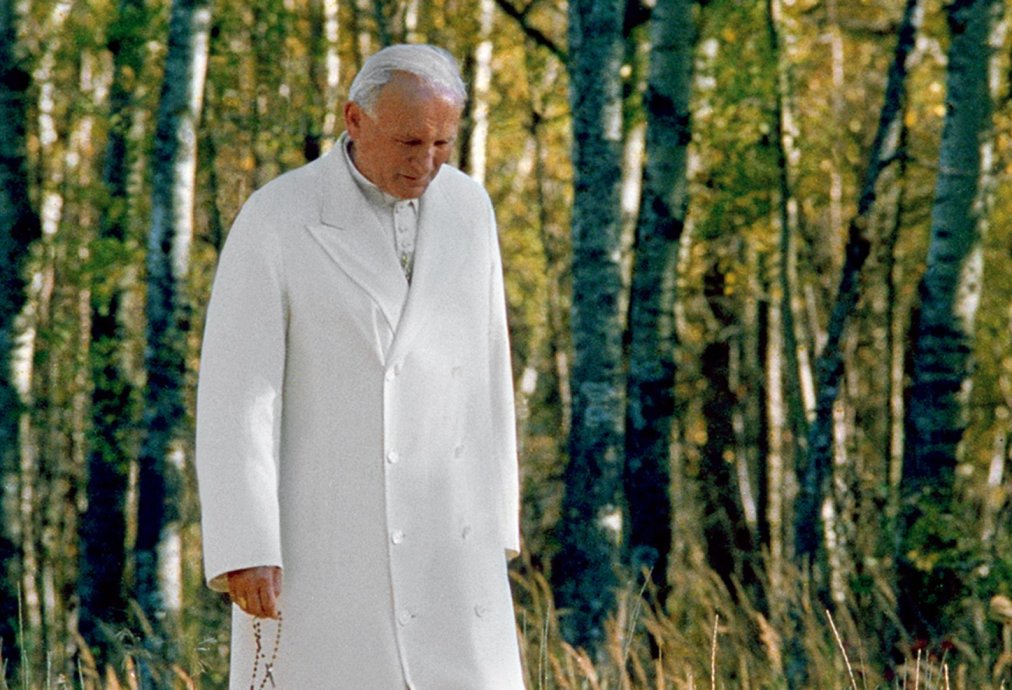
Man cannot live without love. He remains a being that is incomprehensible for himself, his life is senseless, if love is not revealed to him, if he does not encounter love, if he does not experience it and make it his own, if he does not participate intimately in it. This, as has already been said, is why Christ the Redeemer "fully reveals man to himself". If we may use the expression, this is the human dimension of the mystery of the Redemption. In this dimension man finds again the greatness, dignity and value that belong to his humanity. In the mystery of the Redemption man becomes newly "expressed" and, in a way, is newly created. He is newly created!
Dives in Misericordia
In November 1980, the second encyclical, Dives in misericordia, was published. In it one can perfectly see Wojtyla's Krakow roots. Mercy and the struggle for the cult of Sister Faustina, as well as the figure of Brother Albert Chmielowski and the message of his life, although they are not mentioned in the content of the encyclical itself, the tone of the encyclical clearly relates to his experiences in his homeland.
Dives in Misericordia also represents a further exploration of the mystery of Christ begun in the encyclical Redemptor Hominis. Revealing the mystery of the merciful Father - the mercy of God is one of the most important messages of John Paul II's pontificate.
Dives in Misericordia also represents a further exploration of the mystery of Christ begun in the encyclical Redemptor Hominis. Revealing the mystery of the merciful Father - the mercy of God is one of the most important messages of John Paul II's pontificate.
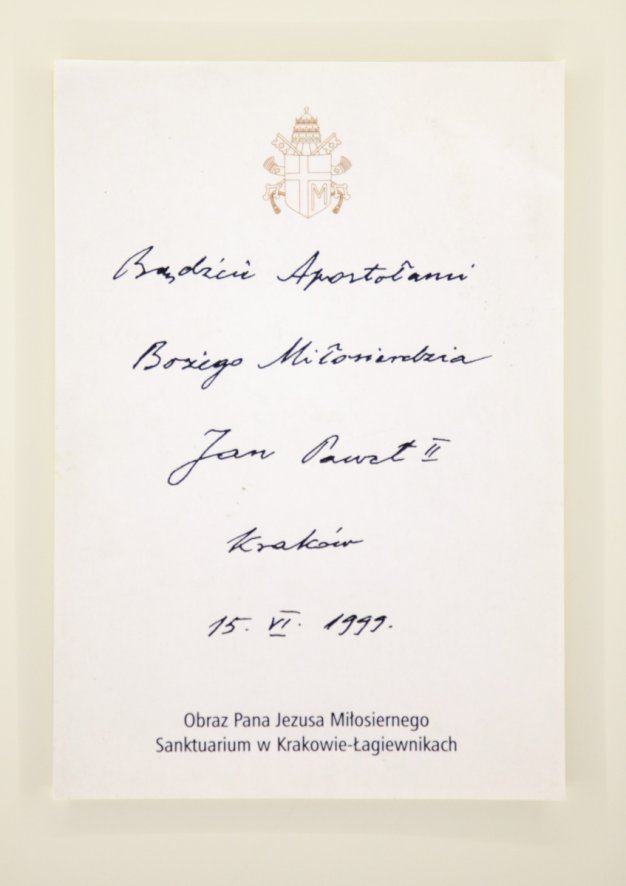
May 13, 1981
The enthusiastic beginning of a very promising pontificate was interrupted by the May 13, 1981 assassination attempt. During an audience in St. Peter's Square, John Paul II was severely wounded by a gunshot wound perpetrated by Turkish assassin Ali Ağca. Despite suffering serious wounds, the pope's life was saved. He himself traveled to Fatima a year later to thank Our Lady for his rescue. Indeed, the assassination attempt was carried out on the day and time of the first apparitions at Fatima. John Paul II considered his rescue as proof of Mary's special protection.
Health complications limited, but did not interrupt, the Polish Pope's intense activities. As late as September 1981, John Paul II published another encyclical, this time on human labor (Laborem exercens). Meanwhile, in November, he issued one of his most important apostolic exhortations: Familiaris consortio, as a summary of the synod of bishops on the family. In the same month, he also appointed Cardinal Joseph Ratzinger as the new prefect of the Congregation for the Doctrine of the Faith, marking the beginning of a close collaboration between the then-pope and his successor.
Health complications limited, but did not interrupt, the Polish Pope's intense activities. As late as September 1981, John Paul II published another encyclical, this time on human labor (Laborem exercens). Meanwhile, in November, he issued one of his most important apostolic exhortations: Familiaris consortio, as a summary of the synod of bishops on the family. In the same month, he also appointed Cardinal Joseph Ratzinger as the new prefect of the Congregation for the Doctrine of the Faith, marking the beginning of a close collaboration between the then-pope and his successor.
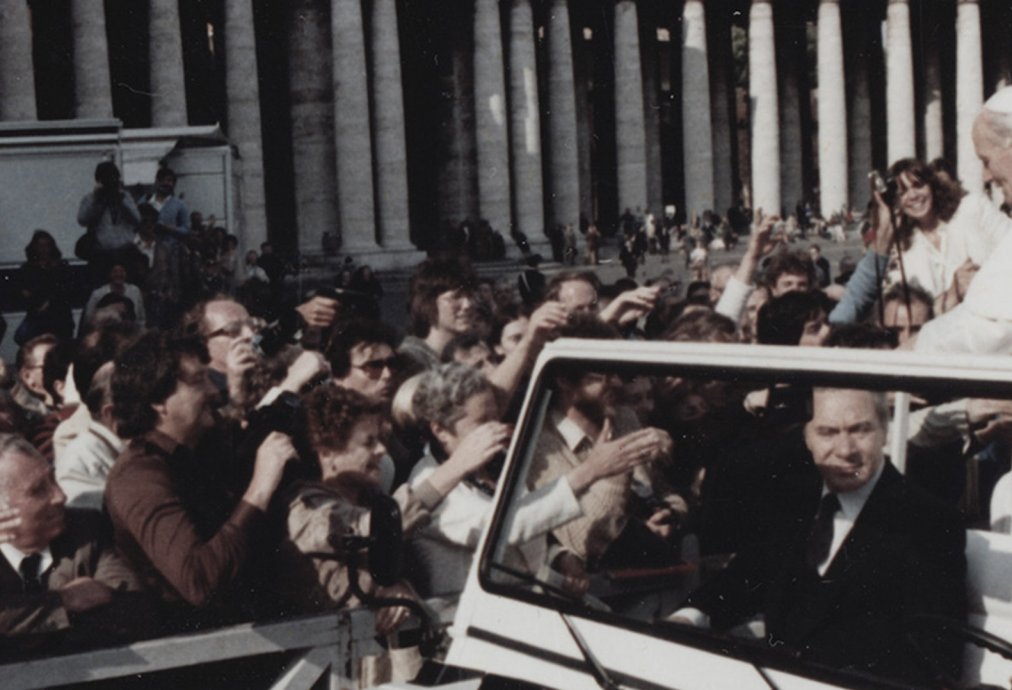
The Jubilee Year 1983
The year 1983 brought the promulgation of the new "Code of Canon Law" and another pilgrimage to Poland (under the difficult conditions of martial law). It was also a meeting with the assassin who tried to deprive the Pope of his life: on December 27, John Paul II visited Ali Ağca in a Roman prison.
It was also a special year for the entire Church. This is because the Pope declared a jubilee year to mark the 1950th anniversary of Christ's atoning death. This jubilee was celebrated from March 25, 1983 to April 22, 1984. At the very end of these celebrations, the first meeting for young people was held in Rome, which can be considered the beginning of World Youth Days - another important initiative of Pope Pole. These are gatherings of young people who meet annually in their dioceses, and every few years they gather together with the pope in a selected location around the world.
It was also a special year for the entire Church. This is because the Pope declared a jubilee year to mark the 1950th anniversary of Christ's atoning death. This jubilee was celebrated from March 25, 1983 to April 22, 1984. At the very end of these celebrations, the first meeting for young people was held in Rome, which can be considered the beginning of World Youth Days - another important initiative of Pope Pole. These are gatherings of young people who meet annually in their dioceses, and every few years they gather together with the pope in a selected location around the world.
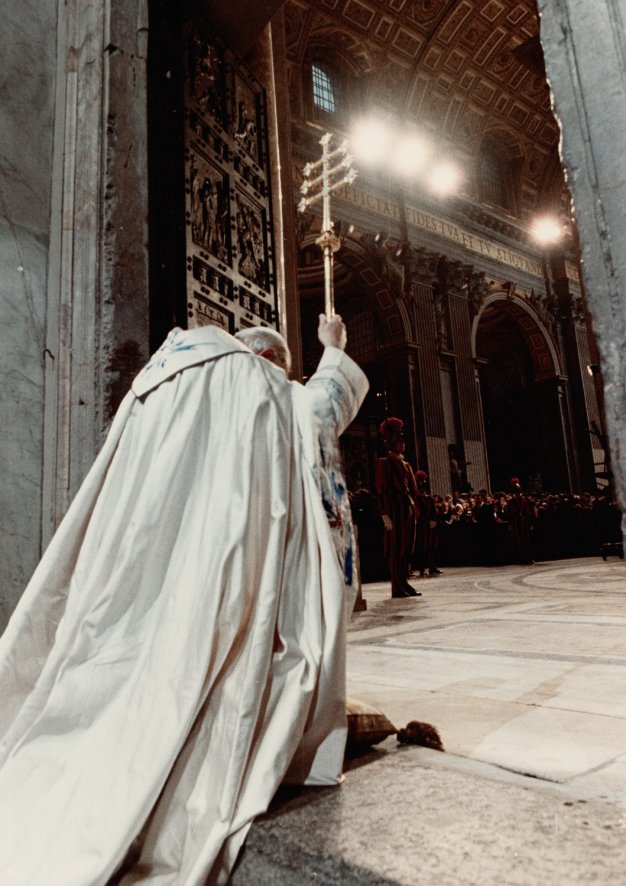
"Slavorum apostoli"
n 1985, the Pope published his fourth encyclical, "Slavorum apostoli" on the evangelizing work of Sts. Cyril and Methodius. In the fall of that year, the Extraordinary Assembly of the Synod of Bishops was held on the 20th anniversary of the end of the Second Vatican Council.
The year 1986 saw the publication of another encyclical - on the Holy Spirit (Dominum et Vivificantem). April 13 of that year saw a historic visit to a Roman synagogue - the first time the Bishop of Rome visited the Jewish community in its temple. Meanwhile, on October 27, on the Pope's initiative, a prayer meeting of representatives of different faiths and religions was held in Assisi as part of the celebration of the World Day of Prayer for Peace. This initiative has become a permanent part of the papal calendar, also becoming an inspiration for local events.
The year 1986 saw the publication of another encyclical - on the Holy Spirit (Dominum et Vivificantem). April 13 of that year saw a historic visit to a Roman synagogue - the first time the Bishop of Rome visited the Jewish community in its temple. Meanwhile, on October 27, on the Pope's initiative, a prayer meeting of representatives of different faiths and religions was held in Assisi as part of the celebration of the World Day of Prayer for Peace. This initiative has become a permanent part of the papal calendar, also becoming an inspiration for local events.

According to the witness of the beginning, God in creation has revealed himself as omnipotence, which is love. At the same time he has revealed to man that, as the "image and likeness" of his Creator, he is called to participate in truth and love. This participation means a life in union with God, who is "eternal life."138 But man, under the influence of the "father of lies," has separated himself from this participation. To what degree? Certainly not to the degree of the sin of a pure spirit, to the degree of the sin of Satan. The human spirit is incapable of reaching such a degree.139 In the very description given in Genesis it is easy to see the difference of degree between the "breath of evil" on the part of the one who "has sinned (or remains in sin) from the beginning"140 and already "has been judged,"141 and the evil of disobedience on the part of man.
John Paul II, „Dominum et vivificantem"
John Paul II, „Dominum et vivificantem"
You are the hope of the world!
An extremely important place in the pontificate of John Paul II was occupied by World Youth Day. For the first time, the Holy Father invited the youth of the world to Rome. These responded with joy. These unique, prayerful gatherings of young people which the Pope from Wadowice initiated have continued to this day. They are held every two, three or four years at the international level.
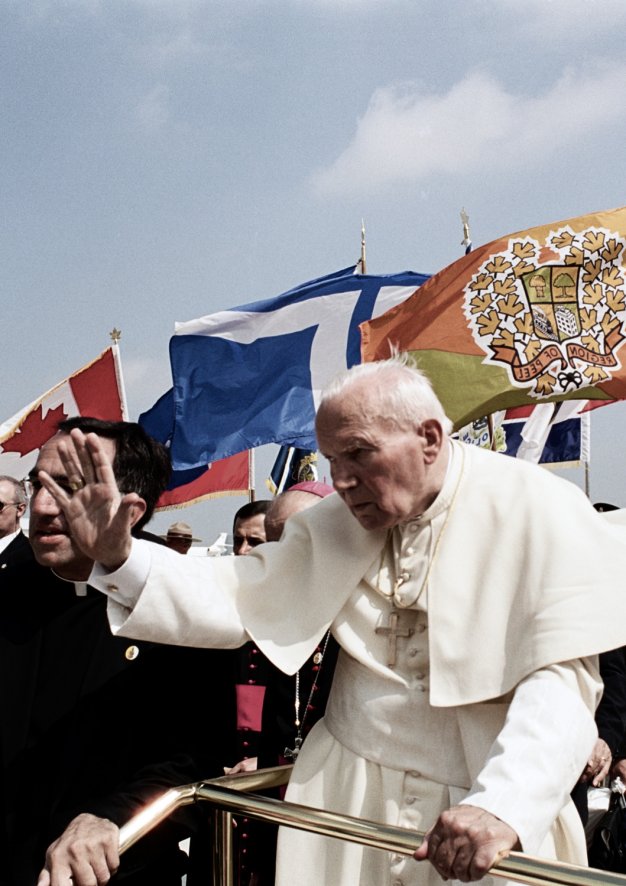
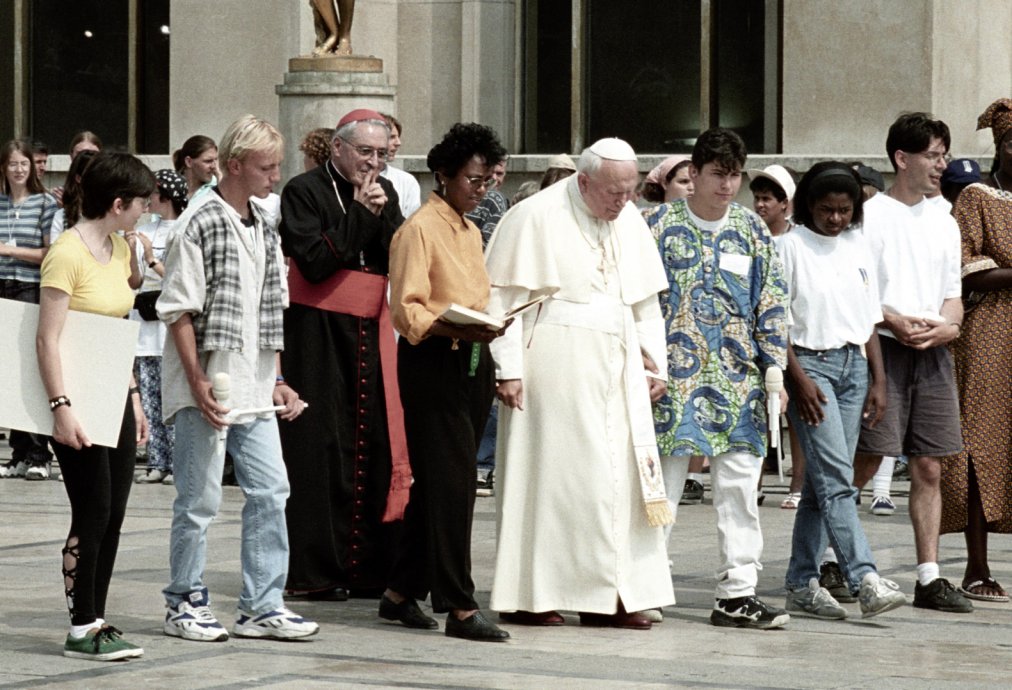
Encyclicals
Subsequent years in the activities of John Paul II bring other very important encyclicals. 1987 was the year of two encyclicals: "Mother of the Redeemer" (Redmptoris Mater) and the social encyclical "Sollicitudo rei socialis."
The encyclical "Redmptoris Mater" picks up the extremely important theme of Marian spirituality - so essential to John Paul II's entire life. From his earliest years, the Pope was deeply immersed in veneration for the Blessed Virgin - the Carmelite scapular, the invocation "Totus Tuus," and finally the pontificate's connection with the apparitions of Fatima - all testified to a sincere entrustment to Mary.
"Sollicitudo rei socialis" is John Paul II's seventh encyclical, issued on December 30, 1987.The Holy Father once again addresses the problem of social inequality and ways to heal the situation. He praises his predecessor's encyclical, which, through its form and content - openness, broad horizons and significant contributions to social sciences - implemented the demands of the post-conciliar renewal.
In his encyclical "Redemptoris missio," issued on December 7, 1990, the Pope shares primarily his personal experience. His entire pontificate was permeated with missionary activity - 104 apostolic journeys, more than 130 countries he visited. He was deeply convinced of the need to proclaim Christ to the whole world, because only in Him can man find the fullness of freedom.
The encyclical "Redmptoris Mater" picks up the extremely important theme of Marian spirituality - so essential to John Paul II's entire life. From his earliest years, the Pope was deeply immersed in veneration for the Blessed Virgin - the Carmelite scapular, the invocation "Totus Tuus," and finally the pontificate's connection with the apparitions of Fatima - all testified to a sincere entrustment to Mary.
"Sollicitudo rei socialis" is John Paul II's seventh encyclical, issued on December 30, 1987.The Holy Father once again addresses the problem of social inequality and ways to heal the situation. He praises his predecessor's encyclical, which, through its form and content - openness, broad horizons and significant contributions to social sciences - implemented the demands of the post-conciliar renewal.
In his encyclical "Redemptoris missio," issued on December 7, 1990, the Pope shares primarily his personal experience. His entire pontificate was permeated with missionary activity - 104 apostolic journeys, more than 130 countries he visited. He was deeply convinced of the need to proclaim Christ to the whole world, because only in Him can man find the fullness of freedom.
A free homeland
In June 1991, the Holy Father arrived in Poland. Although it was his fourth pilgrimage to the homeland, it was primarily the first pilgrimage to a free Poland after the fall of communism. The same year saw the publication of the encyclical "Centesimus Annus," issued on the 100th anniversary of the encyclical Rerum novarum, by Pope Leo XIII. The time of its release - May 1, 1991. - is a period of profound changes, not only in Central and Eastern Europe, but in the entire world at that time. The changes that began to take place after the fall of the Berlin Wall - social, economic, cultural changes - on all of this the Holy Father wishes to shed the light of Church teaching.
Having personal experience of the communist system, the Pope openly and boldly criticizes this system. He points out that already his predecessor wrote about the necessity of the collapse of socialism, which in its assumptions made a fundamental mistake: it treated man only as a particle of the organism, completely subordinated to it. Not recognizing the value and potential of the individual, it violated his rights, and the inefficiency of the economic system and atheism had to eventually lead to the collapse and fall of this ideology.
Having personal experience of the communist system, the Pope openly and boldly criticizes this system. He points out that already his predecessor wrote about the necessity of the collapse of socialism, which in its assumptions made a fundamental mistake: it treated man only as a particle of the organism, completely subordinated to it. Not recognizing the value and potential of the individual, it violated his rights, and the inefficiency of the economic system and atheism had to eventually lead to the collapse and fall of this ideology.
Veritatis Splendor
In 1992, John Paul II signed the new "Catechism of the Catholic Church." In the same year, the Pope underwent major surgery to remove a section of his large intestine, which contained a tumor. 1993 was the year of the promulgation of the tenth encyclical "The Splendor of Truth" (Veritatis splendor), dedicated to issues of the universality of moral norms.
In the encyclical "The Splendor of Truth," the Pope points out that it is only in the light of a relationship with Christ that man can discover who he really is, and thus realize his vocation in the world.
"Veritatis Splendor" is a response to the moral anxiety affecting modern man. According to the Pope, modern thinking has replaced truth with freedom - recognizing it as the supreme value. It was the latter that began to create reality. As a result, the line between good and evil was blurred, and truth was considered a tool of oppression and violence. Such a reevaluation of all values must consequently lead to nihilism and the collapse of culture.
In the encyclical "The Splendor of Truth," the Pope points out that it is only in the light of a relationship with Christ that man can discover who he really is, and thus realize his vocation in the world.
"Veritatis Splendor" is a response to the moral anxiety affecting modern man. According to the Pope, modern thinking has replaced truth with freedom - recognizing it as the supreme value. It was the latter that began to create reality. As a result, the line between good and evil was blurred, and truth was considered a tool of oppression and violence. Such a reevaluation of all values must consequently lead to nihilism and the collapse of culture.
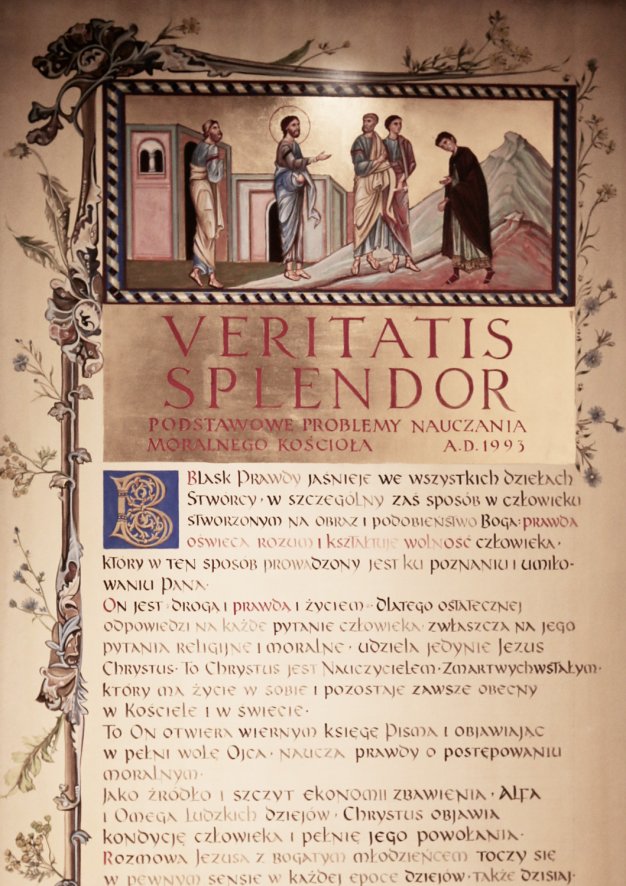
5 million young people at WYD in Manila
In 1995, World Youth Day was held in Manila, Philippines, gathering some five million participants. It was the largest meeting of young people with John Paul II to date.
That same year, John Paul II also signed two more encyclicals - on the value and inviolability of human life (Evangelium vitae) and on the Church's ecumenical activity (Ut unum sint). In May, the Pope briefly visited his homeland, on the occasion of a pilgrimage to the Czech Republic.
That same year, John Paul II also signed two more encyclicals - on the value and inviolability of human life (Evangelium vitae) and on the Church's ecumenical activity (Ut unum sint). In May, the Pope briefly visited his homeland, on the occasion of a pilgrimage to the Czech Republic.
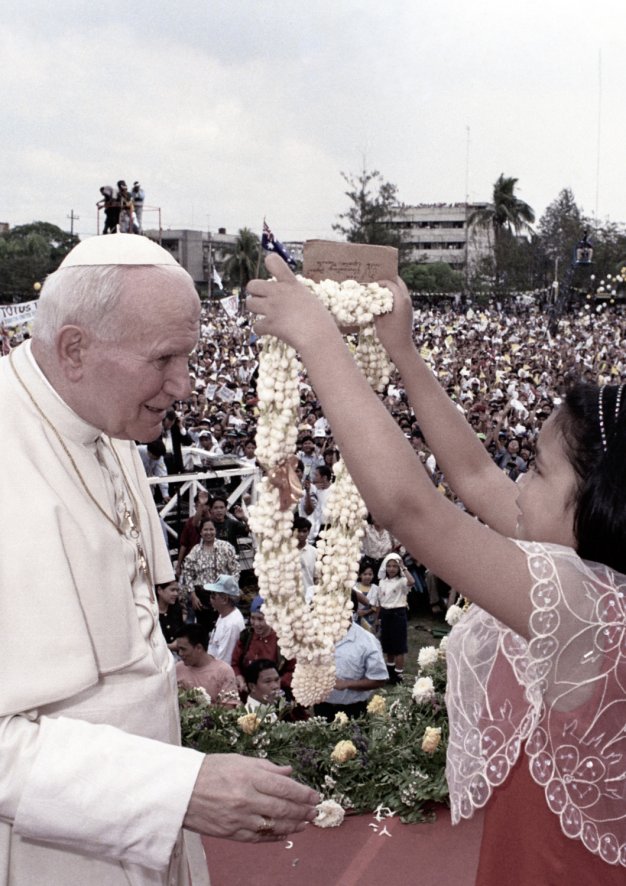
In "Evangelium vitae," John Paul II emphasizes showing the vastness of the beauty and value hidden in life. However, this is not a naive view of reality, but full of realism. The fullness of optimism and hope present in the Pope's teaching comes from adherence to the Gospel, from which life springs. It is the presence of God in human life that constitutes its great value and gives it meaning.
The encyclical "Ut unum sint" ("That they may be one") is another manifestation of John Paul II's aspiration to realize the aims of the Second Vatican Council. The unity of Christianity and the opening of the Church to the world come to the fore. The Holy Father points to ecumenism as one of the most important activities of the Church, its mission being the fulfillment of Christ's message: "Go into all the world!" Every Christian, not just Catholics, is called to proclaim the Risen One.
The encyclical "Ut unum sint" ("That they may be one") is another manifestation of John Paul II's aspiration to realize the aims of the Second Vatican Council. The unity of Christianity and the opening of the Church to the world come to the fore. The Holy Father points to ecumenism as one of the most important activities of the Church, its mission being the fulfillment of Christ's message: "Go into all the world!" Every Christian, not just Catholics, is called to proclaim the Risen One.

"Life is indelibly marked by a truth of its own. By accepting God's gift, man is obliged to maintain life in this truth which is essential to it. To detach oneself from this truth is to condemn oneself to meaninglessness and unhappiness, and possibly to become a threat to the existence of others, since the barriers guaranteeing respect for life and the defence of life, in every circumstance, have been broken down".
John Paul II, Evangelium Vitae
John Paul II, Evangelium Vitae
Gift and Mystery
In 1996, on the 50th anniversary of John Paul II's ordination to the priesthood, a very personal book "Gift and Mystery" was published, describing not only the history of his vocation, but also his youthful years spent in Wadowice and Krakow. In it he wrote:
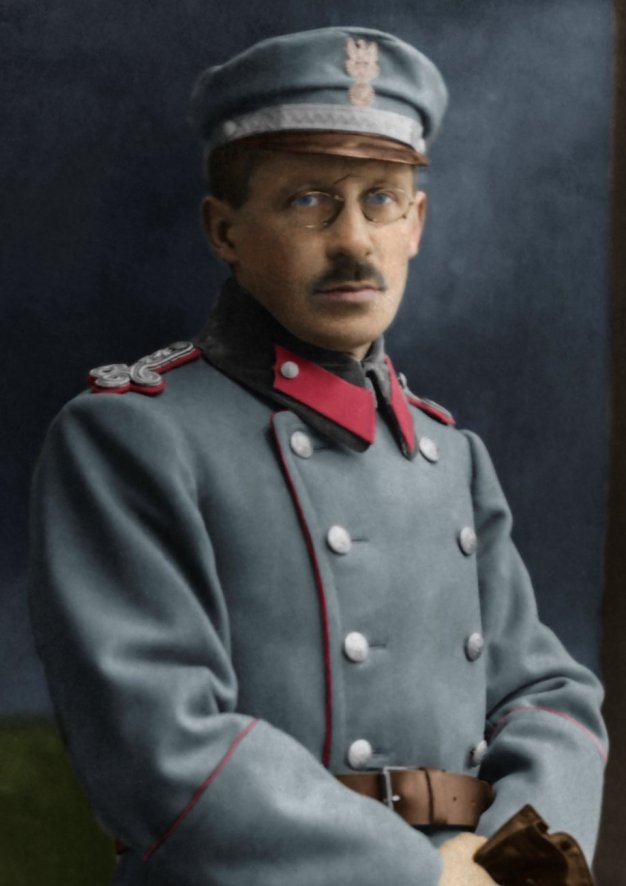
"My seminary preparation for the priesthood was, in a way, prejudiced. To some extent, my Parents in the family home contributed to this, especially my Father, who was widowed early. I lost my mother even before First Communion at the age of 9, and therefore I remember less of her and am less aware of her contribution to my religious upbringing, which was certainly very large. After her death, and then after the death of my older Brother, the two of us were left with Father. I was able to observe his life on a daily basis, which was a strict life. He was a military man by profession, and when he was widowed, it became even more a life of constant prayer. Sometimes I would wake up at night and then find my Father on his knees, just as I always saw him on his knees in the parish church. We never spoke with each other about a priestly vocation, but this example of my Father was some kind of first home seminary."
2000 years of Christianity
The year 2000 was the second jubilee year declared by John Paul II, this time to mark the Church's entry into the third millennium. The jubilee lasted from December 24, 1999 to January 6, 2001. Part of the jubilee celebration was the pope's pilgrimage to the Holy Land, to places associated with the history of salvation.
In 2003, the "Roman Triptych," the only poetic work to come from the pen of a Polish pope, was published. The same year also saw the publication of John Paul II's final, fourteenth encyclical: on the Eucharist in the life of the Church (Ecclesia de Eucharistia).
In 2003, the "Roman Triptych," the only poetic work to come from the pen of a Polish pope, was published. The same year also saw the publication of John Paul II's final, fourteenth encyclical: on the Eucharist in the life of the Church (Ecclesia de Eucharistia).
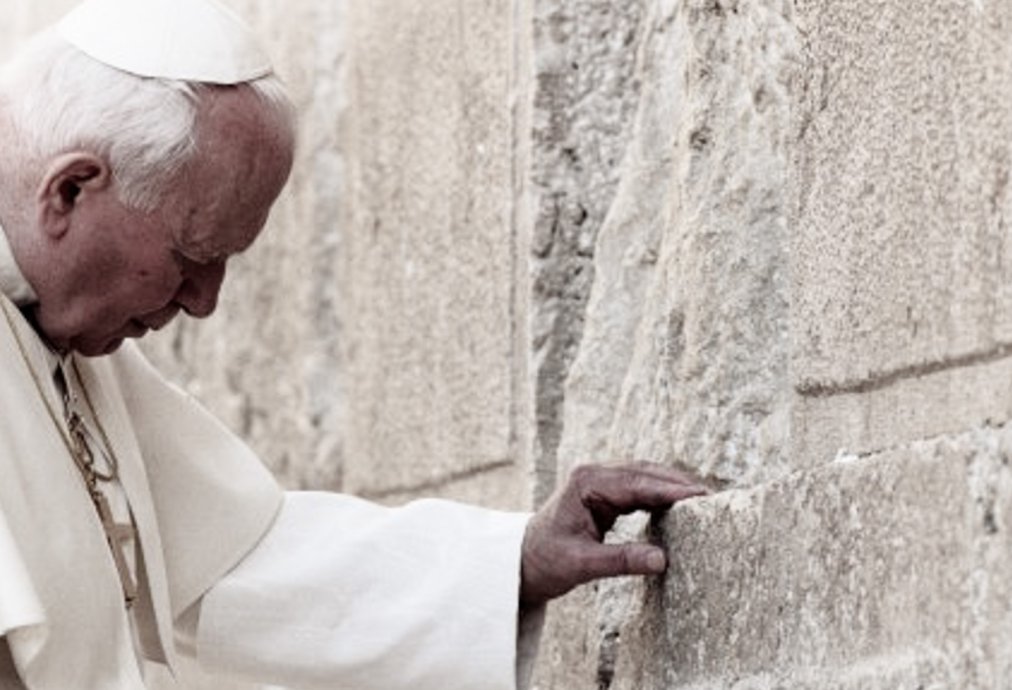
The last apostolic journey
In August 2004, John Paul II went on his last, one hundred and fourth foreign trip - to Lourdes, France. The Pope's stay in this unique place was an expression of solidarity with sick people, his personal testimony of suffering. Many evaluators of the Polish Pope's pontificate considered this pilgrimage one of the Holy Father's most important apostolic journeys.
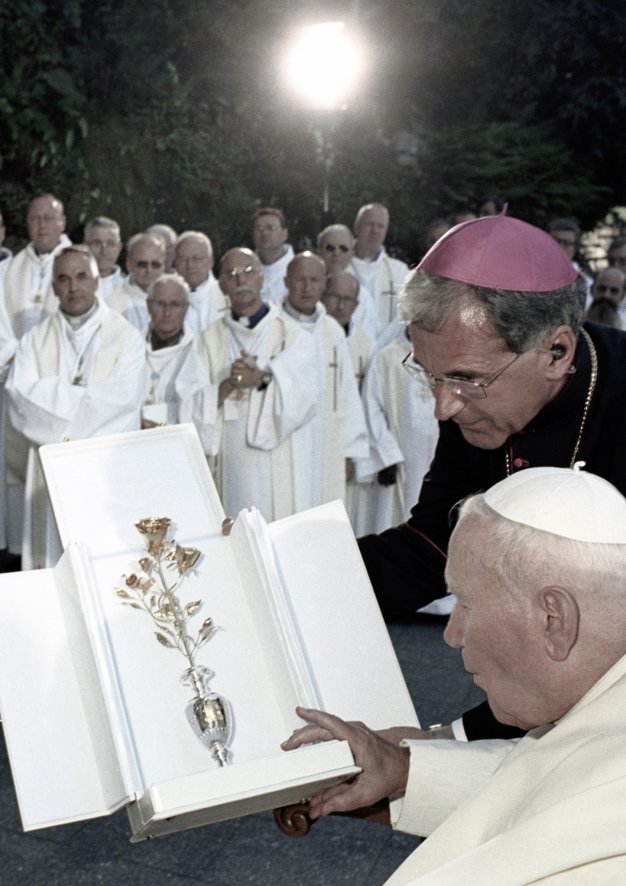
Suffering makes sense
John Paul II's health began to gradually deteriorate in late January and early February 2005. Subsequent medical interventions brought no significant improvement. Through the media, the whole world was able to participate in the last papal catechesis on suffering and dying. Particularly poignant were the celebrations of the Paschal Triduum, in which John Paul II could no longer participate in person, but only joined the faithful spiritually from his private chapel.

On Easter Wednesday, March 30, the Pope appeared for the last time to the faithful who had gathered in St. Peter's Square at the time of the general audience. However, he was unable to speak even words of blessing. So the faithful began to gather and keep vigil in St. Peter's Square to accompany the dying pope. Those present at the pope's side relay some of his last words to those who came to the square: "I have been looking for you, and now you have come to me. I thank you for this."
"...returned to the Father's House".
Pope John Paul II departed for the Father's home on Saturday, April 2, 2005. That was the end of his pontificate, which lasted 26 years, 5 months and 17 days. It was the third longest pontificate in the history of the Church. He died on the eve of the Feast of Divine Mercy, which he himself established on the basis of revelations received by Sister Faustina Kowalska.
Already at the time of John Paul II's funeral, which took place in St. Peter's Square on April 8, the faithful raised cheers and prepared banners with the Italian inscription "santo subito!" (saint immediately). Responding to this expression of will by the faithful, John Paul II's successor, Pope Benedict XVI, shortened the waiting time required to begin the beatification process - according to Church regulations, such a process can begin at the earliest five years after the death of a candidate for the altars.
Already at the time of John Paul II's funeral, which took place in St. Peter's Square on April 8, the faithful raised cheers and prepared banners with the Italian inscription "santo subito!" (saint immediately). Responding to this expression of will by the faithful, John Paul II's successor, Pope Benedict XVI, shortened the waiting time required to begin the beatification process - according to Church regulations, such a process can begin at the earliest five years after the death of a candidate for the altars.

Saint
Following the immediate commencement of the legally required process and the approval of the needed miracle, John Paul II was declared Blessed on May 1, 2011. The ceremony took place in Rome, in St. Peter's Square, and was presided over by Pope Benedict XVI. October 22, the anniversary of the inauguration of the pontificate, was chosen as the date for the liturgical commemoration of Blessed John Paul II. Meanwhile, on April 27, 2014, Pope Francis, in the presence of Pope senior Benedict XVI, declared John Paul II a saint of the Catholic Church. Along with the Polish Pope, Pope John XXIII was then canonized.
